It’s our fervent hope that each of you, our loyal readers, will greatly enjoy and appreciate this article we present about these 5 Astounding Volcanoes of Africa. It was certainly our pleasure to gather the information for you. May it serve to provide you with both education and increased awareness.
Certainly, these few features listed herein represent only a miniscule portion of the similar wonders found throughout this amazing region of wour world. It’s our belief, though, that they serve as excellent representations of the marvels found here. Check out some of our other articles, as well.
Waw an Namus
Waw an Namus Facts
- Starting off this article about these 5 Astounding Volcanoes of Africa we present the marvel of Nature known by the title of Waw an Namus.
- The breathtaking site known by this unique name truly distinguishes itself from other, relatively ordinary volcanoes. The name of the magnificent site also has an alternate spelling, however. By either name, though, this marvel remains a breathtaking sight to behold.
- Surprisingly enough, the English translation of the original name of this wonder roughly equals Oasis of mosquitoes. The exact age of the formation also remains a point of controversy among scientists. Different pieces of evidence hint at varying ages for this work of Nature.
- The natives of the region it appears in knew of the existence of this masterpiece for many centuries, prior to its discovery by outsiders. The first mention of it to the rest of the world, howver, occurred in 1862. The German explorer Karl Moritz von Beurmann made that report.
- The first known outsider to reach it, though, only did so in the year 1920. At that time, the French explorer Laurent Lapierre had that singular honor. The first known scientist to reach the volcano, did so in 1931. That distinction belongs to the Italian geologist, Ardito Desio.
- In our modern era, this creation of powerful natural forces now represents one of the most popular tourist destinations in its region. Those fortunate individuals enough to visit Waw an Namus quickly realize that it has far more to offer the observer than many other volcanoes.
Waw an Namus Physical Description
Despite not being its most notable feature, the sheer size of Waw an Namus quickly grabs the attention of visitors. That’s because the caldera itself measures a staggering 2.5 mi (4 km) in diameter. This same feature also boasts a depth measuring roughly 330 ft (100 m).
Nestled within the confines of the already remarkable caldera itself, though, lies an equally impressive scoria cone. This natural formation itself measures about 0.81 mi (1.3 km) wide at its base. This section of the volcano also has a height of approximately 460 ft (140 m).
Yet, amazingly, this feature holds still another crater! This particular one, though, happens to measure roughly 260 ft (80 m) deep, and 490 ft (150 m) wide. The remains of still another such is situated on the western section of the summit of the crater of the awesome Waw an Namus.
Its wonders do not simply end there, however. A darker colored layer of volcanic fragments also extends outward around the central site. This other layer, called tephra, reaches a mind-boggling distance of 12.4 mi (20 km) in some directions. Its depth also ranges from 0.8 – 59 in (2 – 150 cm).
Waw an Namus Location, History, and Ecosystem
The mesmerizing site known as Waw an Namus formed in a part of the world that may shock some individuals who learn of it. That’s because the marvel lies within the confines of the Sahara Desert! More specifically, it’s found in the Fezzan region of the country of Libya, set in Africa.
To this day, the exact age of the structure remains a source of debate among researchers. The latest studies place its formation at somewhere around 200,000 years ago, give or take about 9,000 years. The scoria cone situated in the center, though, may be only a few thousand years old.
Incredibly, a stunning total of three small lakes actually lie within the caldera of Waw an Namus. Given the fact that evaporation rates in the region exceed precipitation rates, experts believe that they’re fed by groundwater. These have a total surface area of around 0.12 sq mi (0.3 sq km).
These remarkable, and unexpected, lakes remain relatively shallow, however. In fact, the maximum depth of the deepest only reaches 49 – 52 ft (15 – 16 m). Seasonal variations affect the altitude of these bodies of water, as well. Nonetheless, this averages roughly 1,424 ft (434 m) above sea level.
Various other small bodies of water also appear within Waw an Namus. These, however, tend to come and go at random intervals. All of them sometimes display various shades of red. To no surprise, however, the colors derive from chemical compounds in the surrounding rock strata.
Piton de la Fournaise
Piton de la Fournaise Facts
- Next up in this compilation of 5 Astounding Volcanoes of Africa comes the impressive creation men call Piton de la Fournaise.
- This magnificent creation of geological forces is best known throughout the world by the French language name applied to it herein. Local residents sometimes also refer to this true natural marvel simply by the short but descriptive alternate term of le Volcan.
- Regardless of which of these monikers one applies to it, though, the wonder stands out from others of its type due to its present nature. That holds true due to the fact that it’s still highly active. In fact, the mountain currently ranks as one of the most active volcanoes on the planet.
- This ranking actually places it with the likes of Mount Erebus, Stromboli, Mt. Etna, and Kilauea. Thus, while unquestionably magnificent, it nevertheless remains an extremely hazardous location. Despite this situation, though, it’s become an extremely popular tourist destination.
- Local officials naturally take every precaution possible with the safety of both the local population and tourists alike. To than end, the volcano continues to be very closely monitored at all times by numerous instruments. This provides for some warning of impending eruptions.
- The most recent eruption of the awesome Piton de la Fournaise occurred on December 7, 2020. The aforementioned monitoring of the site, however, managed to provide warning to local officials. That prompted the closing of the site to visitors prior to that eruptive event.
- In an ironic twist, this marvelous yet dangerous site currently sits within a National Park. Itself being a World Heritage Site, this bears the name of the Réunion National Park.That serves as the main reason for the extreme diligence of the authorities in observing its activities.
Piton de la Fournaise Physical Description
It bears noting that the breathtaking Piton de la Fournaise, cannot be compared with your typical volcano, if such a thing even exists. That’s because its gigantic caldera boasts some truly impressive dimensions. More precisely, it has an astonishing diameter measuring roughly 5 mi (8 km).
In case this does not manage to impress the average reader, however, Nature did not simply stop there. That’s true since the site also boasts other incredible dimensions. That’s because it stands an imposing 8,635 ft (2,632 m) tall. That alone elevates it to extreme status, no pun intended.
Yet the marvels of this geological wonder do not simply end there. Within the already incredible confines of this feature lies what’s called a lava shield that posseses a diameter of approximately 1,300 ft (396m). Few volcanoes on the planet have features rivaling those of this spectacular site.
Astonishingly, the list of marvels to be found inside of Piton de la Fournaise just keeps unfolding for view. Indeed, numerous other geological formations line the inside of the enormous crater. These primarily consist of much smaller craters and volcanic features known as spatter cones.
Over time, and simply working to enhance its already extreme impressiveness, another visually stunning feature came into existence. That’s due to the fact that, on the southeast side of the caldera, the sea breached its walls. This only augments the incredible array of sights to behold here.
Piton de la Fournaise Location and Activity
The very air of magic pervading the marvelous yet dangerous mountain named Piton de la Fournaise also owes part of its presence to its location. That’s because the intriguing volcano additionally formed in an extremely remote part of the world. That region’s already known for its marvels.
More precisely, though, it formed on the eastern side of what now holds the name of Reunion Island. That site, itself wondrous, Nature created in the Indian Ocean, near the continent of Africa. This places the tantalizing creation of ongoing natural processes east of the island of Madagascar.
According to the latest, though ongoing, scientific research, this truly stunning volcano formed roughly 530,000 years ago. In relative geological terms, it is thus comparatively young. It further represents only a portion of what experts call the Reunion hotspot, active for 66 million years.
Though extremely active, as mentioned previously, the phenomenal Piton de la Fournaise typically produces comparatively slow-moving flows, as opposed to violent eruptions. The majority of its activity therefore falls into the category of basaltic flows. Over 150 have been recorded.
While the majority of these events remain inside the caldera, a few do manage to leave its confines, however. The most recent of these occurred in February of 2019. But, in all of this, only 6 have reached beyond the caldera. That could change at some point though, due to its active nature.
Nyiragongo Volcano
Nyiragongo Volcano Facts
- Our next choice for inclusion in this gathering of these 5 Astounding volcanoes of Africa bears the somewhat hard to pronounce moniker of Nyiragongo Volcano.
- This amazing creation of geological processes bears the rather tongue-twisting title give here in parts of the world. It’s perhaps best known, at least to researchers, for its utterly unique combination of factors. Vulcanologists therefore continue to study it even today.
- In fact, those ongoing investigations keep a multitude of geologists, vulcanologists, and even those specializing in related fields busy. That’s mainly due to the extreme variability of conditions in and around its confines. While fascinating, this also remains dangerous.
- The breathtaking site also stands out from similar formations around the world. It further does so for a variety of reasons. Perhaps chief among these stands its sheer volume. While this naturally varies, the average amount of lava contained within it staggers the imagination.
- More precisely, the average amount of molten rock that’s contained inside makes it the largest regularly maintained lava lake in the world. The lava produced by this volcano additionally garners much interest, and thus study, due to its intriguing and highly unusual nature.
- That’s true since that material produced by the magnificent Nyiragongo Volcano possesses an extremely fluid consistency. This occurs due to its containing an unusually high concentration of alkali-rich volcanic rock. That nature creates a remarkable effect on its eruptions.
- Coincidentally, this impressive volcano also possesses a relatively steep slope. Its flows often literally do flow, almost like water. Combined with the fluid consistency of that lava and its proximity to populated areas, it’s viewed as a highly dangerous cration of geological forces.
Nyiragongo Volcano Physical Description
The fabulous Nyiragongo Volcano represents an excellent example of the specific variety that experts in the field classify as a stratovolcano. That’s one displaying a roughly conical shape, that’s also formed of multiple layers of hardened lava and debris, professionally known as tephra.
This wonder of vulcanism also remains highly active in nature, and indeed, remains in that state almost constantly. This serves to make it one of the few of its type in the world for which this holds true. Its precise shape and dimensions are therefore constantly changing, at least to small degrees.
This leading, turbulent geological marvel of its region additionally boasts yet other impressive physical statistics. It stands quite tall, with a height equaling roughly 11,380 ft (3,470 m). The primary crater itself also stands out for its phenomenal size, measuring almost 1.25 mi (2 km) in width.
The ever-present lava lake of the Nyiragongo Volcano adds yet another distinctive characteristic to the already amazing site. That’s because this feature possesses an average depth of nearly 2,000 ft (600 m). Yet the nature of the lava itself is the most distinctive feature of this prodigious peak.
This has an extremely high alkali ratio, which allows for its flowing remarkably rapidly down its steep slopes. As a result, flow speeds sometimes even reach 60 mph (96 kph). Due to its specific combination of slope and lava fluidity, its flow speeds represent the fastest currently known to man.
Nyiragongo Volcano Location and History
For the moment, vulcanologists still know little of this marvel’s ancient eruptive history. During its activity in modern times, though, events remains well documented. The volcano previously erupted at least 34 times since 1882. Incredibly, some of these eruptions lasted for years at a time.
It represents part of the western branch of the East African Rift System. Here, the African Plate continues to split into the Nubian Plate and the Somali Plate. As the plates pull apart, the Earth’s crust thins and fractures, allowing magma from the mantle to rise and form volcanoes.
This amazing volcano also has an amazing history all its own, however. It actually overlaps with several other volcanoes, even older, and sits amid hundreds of small cinder cones. Because of its extreme and unique dangers, the Nyiragongo Volcano was named as a Decade Volcano in 1991.
In March of 2016, the Goma Volcano Observatory discovered that a new vent had recently opened on the northeast edge of the crater. Since that time, various rumblings and small quakes have continued to occur within its confines. It’s by no means finished amazing the human race.
Ol Doinyo Lengai
Ol Doinyo Lengai Facts
- Now appearing in this compendium of these 5 Astounding Volcanoes of Africa comes the stunning natural marvel named Ol Doinyo Lengai.
- The very simple term serves as the most commonly used name for this true masterpiece of geological processes. That term, however, merely represents the english language translation of its name in the native tongue of the original inhabitants of its region.
- Two local groups of Indigenous Peoples share that specific common language. In the ancient tongue of both the Maasai and the Sonjo, the term translates as The Mountain of God. They also use many other terms, though, such as Basanjo, Donjo Ngai, and Mongogogura.
- Regardless of which one of these moniker one uses, it’s an impressive natural feature. It also merits a full measure of appreciation for its uniqueness. That’s due to the special attributes of the lava it produces. These easily rank it as one of the most unusual volcanoes on the planet.
- Due to its extremely unique nature, the lava spewed forth by the amazing Ol Doinyo Lengai displays astonishing patterns. It’s initially black or brown in color. Within days, or sometimes only hours, however, it changes color. After that time, it changes to a snow-like white!
- Yet another quality of its flows distinguishes it even further from other volcanoes. Its flows also form as highly liquid compared to others. In fact, these remain the most liquid-like of any known such flows. These also emerge at significantly lower temperatures than others.
Ol Doinyo Lengai Physical Description
The fabulous Ol Doinyo Lengai easily merits attention and appreciation by those fortunate enough to view it. It further does so for a variety of reasons. The site’s not the largest of its kind around the world, of course. Yet, its physical dimensions certainly qualify it as an impressive volcano.
The truly mesmerizing site boasts a remarkably rounded and even cone shape structure. The intriguing mountain also rises to a respectable height above the surrounding terrain. This aspect of the site makes it clearly visible over great distances. It stands an impressive 5,900 ft (1,800 m).
Interestingly, each side of the summit of the mountain additionally features a large crater. These remain somewhat separated by a ridge measuring approximately 360 ft (110 m) in length. Despite such close proximity to each other, the two craters displays striking different appearances.
The one appering on the southern flank presently appears to be completely inactive. This sometimes fills with water. The other crater, however, presents us with a vastly different view. It’s routinely covered in fresh lava flows. It also regularly forms small, temporary cones that emit lava.
The captivating marvel of Ol Doinyo Lengai further manifests several parasitic vents. These smaller formations appear on its flanks. Presently, four of these exist on its slopes. The western flank also displays large, deep fractures. Large debris fields dot its sides as well, from earlier events.
It’s the lava itself of this wonder that ranks as its most unique structure, however. This stratovolcano produces eruptions with an incredibly low silica content. Its composition actually consists of more than 50% carbonate, even though this compound rarely appears on the surface of the earth.
Ol Doinyo Lengai Location, Formation, and Importance
The location of Ol Doinyo Lengai probably won’t surprise many of you when you learn of it. That’s because this wonder of geological processes formed in a region of the world well known for its natural marvels. That’s due to the fact that it formed on what’s now the continent of Africa.
There, the geological formation lies in the rough southeastern section of the continent. That location places the amazing formation with the boundaries of the country of Tanzania. Within that area, the volcano lies in the more northerly portion of the country, above the Serengeti.
The mountain itself forms an integral part of the East African Rift Valley. Geological research indicates that this continental rift began forming around 1.2 million years ago. Over timespan of time, the resulting thinned crust allowed for the formation of the site as it’s seen today.
Though far too infinitesimally slow for human observation, this expansion still continues today. Such ongoing movement generates the heat that still maintains the activity of the mountain. This continued movement by the rift proceeds at a very leisurely 0.12 in (3mm) per year.
The mighty Ol Doinyo Lengai amazing holds much to offer. It plays a vital role in the overall health of the entire surrounding ecosystem. Its unique lava actually breaks down quickly when after it rains. The resulting runoff has helped lead to the remarkable verdure of the entire region.
It’s importance doesn’t simply end there, though. That’s true since it’s also quite important to scientific research. Carbonatite, which it produces, remains invaluable to the study of rare earth elements. This site represents the only actively producing source of these elements on the planet.
Erta Ale
Erta Ale Facts
- Closing out this articles about 5 Astounding Volcanoes of Africa we present you with the wonder of Nature going by the appellation Erta Ale.
- The short term given it serves as the english language name for this spellbinding creation of naturally occurring geological forces. Like many such incredible features located around the globe, this natural marvel does have another, previously used moniker, though.
- It orginally bore the name of Irta’ale in the native language of the indigenous population inhabiting its region. The commonly used title for the feature roughly translates as smoking mountain. It comes from the ancient tongue of the local Indigenous People, named the Afar.
- Obviously, the original inhabitants of the area have known of its existence for untold centuries. It remains unclear precisely when the first non-natives first spotted it, though. However, unconfirmed reports of sightings by various European explorers date back to the 16th century.
- Those reports, however, only ever mentioned the volcano itself. The most utterly remarkable individual characteristic of the mountain, though, wasn’t reported until the year 1960! It’s believed that this, an extraordinary lava lake, formed approximately 107 years ago.
- Unfortunately, researchers still possess only a very limited knowledge of the otherworldly wonder of Erta Ale. The terrain in the immediate area remains considered some of the most inhospitable in the world. This makes access to the site both extremely difficult and dangerous.
Erta Ale Physical Description
The eerily magnificent Erta Ale constitutes an indescribably unique location. In some ways itforms an incontrovertibly unique formation. It therefore draws a great deal of interest for its natural wonders. The site garners such intense interest due to a combination of remarkable aspects.
Though certainly not the tallest volcano currently known to human science, it nonetheless boasts a fully respectable size. In its present state, the mountain stands roughly 2,011 ft (613 m) tall. The base of the impressive formation also has an astonishing diameter measuring 31 mi (50 km)!
The caldera of this natural product of Nature and time further holds correspondingly attention-grabbing dimensions. Incredibly, this part of the awesome site’s roughly rectangular in shape. It also measures about 1 mi (1.6 km) in length. Its width even stands out, at about 0.43 mi (0.7 km).
Simple size isn’t the only tantalizing aspect of the caldera, though. That’s true because this part of the formation itself holds two pit craters within it. Evidence indicates that both of these often held lava lakes throughout their history. Only seven other volcanoes on earth host such active features.
The largest of the two of these within Erta Ale possesses a width equaling roughly 1,148 ft (350 m). It’s also about 656 ft (200 m) deep. The southern of the two ranks as the smaller of the pair. It’s about 328 ft (100 m) in depth. The most recently measured diameter equals about 213 ft (65 m).
Though significantly smaller than its companion, it’s by far the most famous. This stands out as the longest continually active feature of its kind known to science. Its longevity and unearthly appearance remain unlike any other. This garnered it the popular name of Gateway to Hell.
Erta Ale Location, Formation, and History
The location of the haunting creation of time and geological activity known as Erta Ale doesn’t surprise many people who learn of it. That’s due to the fact that the site formed in a part of the world widely known for its natural wonders. Nature provided the region with countless such.
More precisely, the volcanic mountain formed on what’s now known to science as the continent of Africa. It’s centered over what’s popularly known as the East African Rift. That places it in the Afar Region of northeastern Ethiopia. That setting additionally locates it within a local desert.
It’s very formation further distinguishes the mountain from other sites of its kind across the globe. That’s due to the fact that it’s the product of a triple junction of tectonic plates. To the present knowledge of geologists, this is the only place on earth where such a conjunction happens.
The movement of these plates creates the powerful forces responsible for its many unique traits. This truly distinctive mount lies 246 ft (75 m) below sea level, because of the downward thrust of one of the plates. The mountain itself’s comprised of material inexorably pushed upward.
Ethereal yet undeniably captivating Erta Ale holds its share of perils, though, to be certain. Though far less common than its continued slow activity, active eruptions do occur sporadically. In August of 2007, a flow escaped the crater, forcing an evacuation of hundreds of numerous local residents.
Explosive eruptions also happen on rare occasions. In both the years 2008 and 2017, scientists reported these occurring. The last major eruption took place on September 25, 2005. During this event, thousands of inhabitants fled, two disappeared, and several hundred cattle perished.
5 Astounding Volcanoes of Africa
We sincerely hope that each of you thoroughly enjoyed reading, and hopefully learning something from, this article we’ve written about these 5 Astounding Volcanoes of Africa. It’s also our hope that doing so has left you with either a new or renewed appreciation for such wonders of Nature.
Unfortunately, many other such features around the world now find themselves facing severe threats to their continued existence in an undamaged state. Many of those dangers, in fact, stem from the actions of mankind. We must each do all that we can to protect and preserve all of them.
Check out our other articles on 5 Fabulous South American Lakes, Spectacular Halloween-Appropriate Species, 4 Fantastic Woody Shrubs of France, The Mighty Tornado
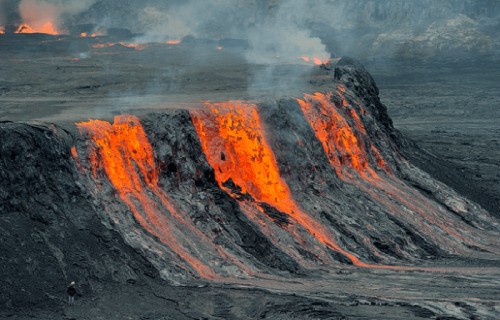

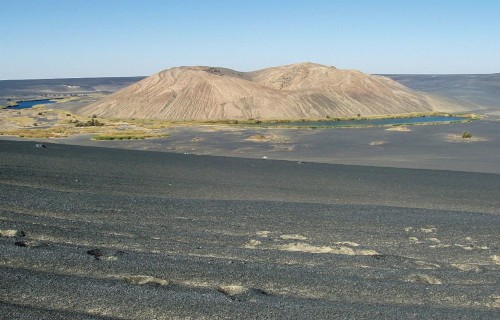
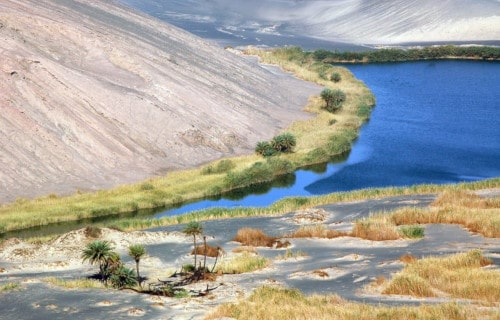
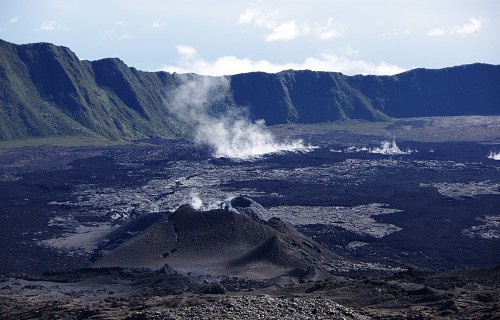
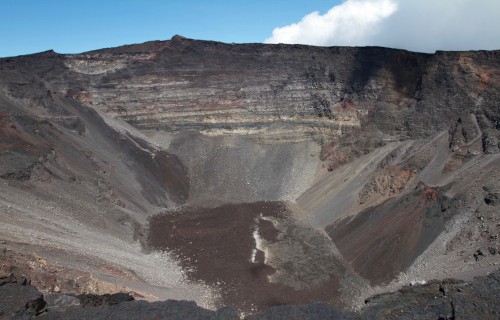
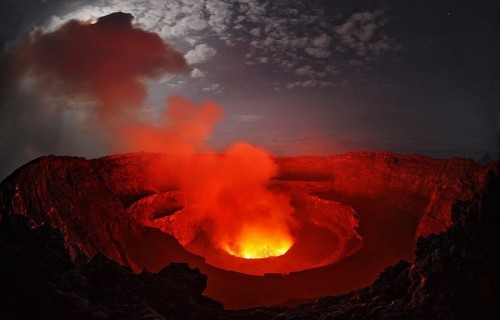

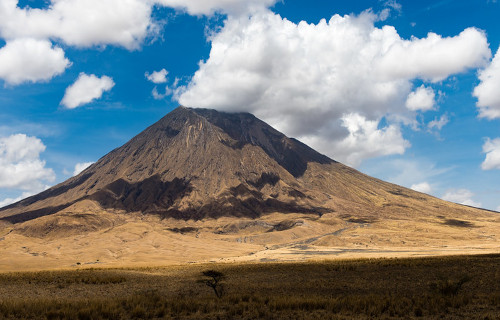
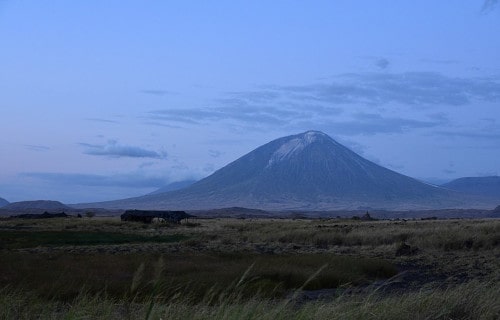

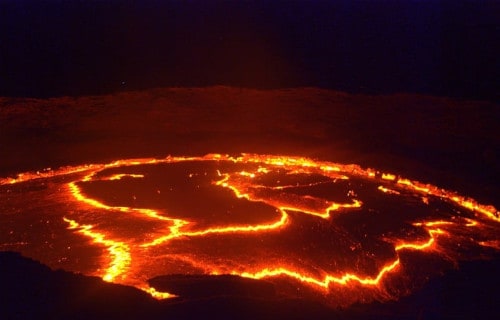
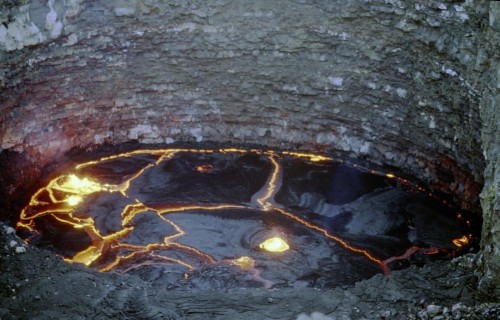
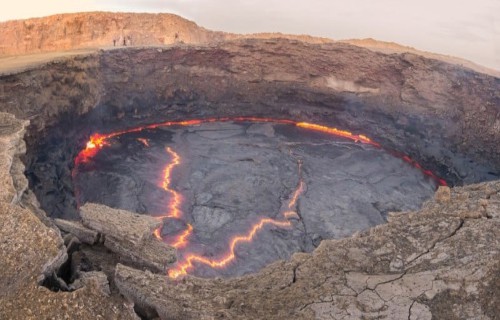









Leave a Reply